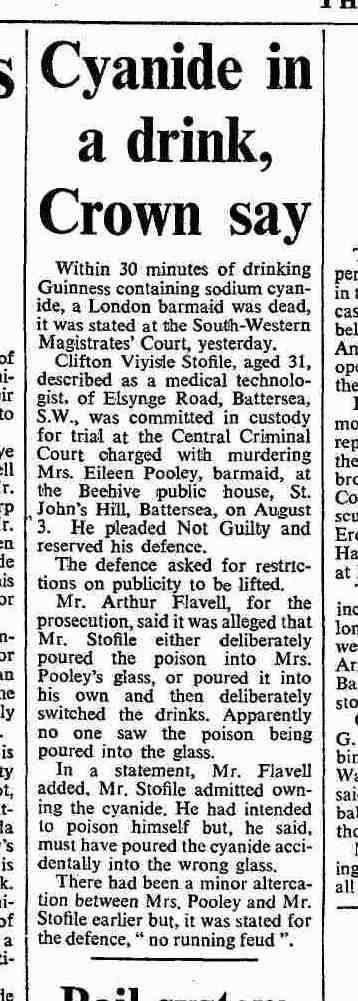Last month we looked in detail at the issue of domestic violence (or intimate partner) homicides in London by looking at the cases for 2011. In part two, we compare the figures for previous years.
So what are the trends in ‘DV’ homicides in London over the last five years?
In brief, over 2008 to 2011:
- The proportion of DV cases increased from around 11 per cent to 13 per cent.
- The number of DV cases remains relatively constant each year
- The percentage of female victims fluctuates over time but is usually around 20 to 22 per cent
However the preliminary figures for 2012 (subject to change) are 19 female victims out of 93 total, or 20.4 per cent, of which 10 appear to be DV cases, or 10.8 per cent).
Obviously dealing with such a short time frame and relatively small numbers makes the identification of any real trends difficult. However, it seems that the decrease in homicide over the last five years does not really apply to female victims or domestic violence.
| Year | 2008 | 2009 | 2010 | 2011 |
| Total victims | 145 | 131 | 123 | 117 |
| Female victims | 32 | 23 | 30 | 26 |
| Percentage Female | 22.1 | 17.6 | 24.4 | 22.2 |
| DV (both sexes) | 16 | 14 | 15 | 15 |
| Percentage DV | 11 | 10.7 | 12.2 | 12.8 |
Note: For the category ‘Domestic Violence’ we have included all cases that involve men or women being killed by their partners or ex-partners. Some cases involve little or no history of violence and a small number of others are often described as ‘mercy killings.’
The full case listings are below (click on name to read summary in new window).
2008: Total number of ‘domestic violence’ cases: 16 (out of total 145 homicides, or 11.0 per cent)
Yvonne Barlow, 44, stabbed to death by her partner.
Emma Forrester, 34, stabbed to death by her husband.
Michael O’Brien, 43, stabbed to death by his girlfriend.
Graham Boyne, 41, stabbed to death by his wife.
Arsema Dawit, 15, stabbed to death by her ex-boyfriend.
Samantha Boyden, 36, stabbed to death by her partner.
Abiodun Ilumoka, 40, stabbed to death by her partner.
Rahmona Ahmedin, 23, stabbed to death by her partner.
Ashley Reynolds, 23, thrown to her death by her partner.
Jusna Sabit, 36, battered to death by her husband.
Dina Sharpe, 39, battered to death by her partner.
Marilyn Leslie, 49, stabbed to death by her partner.
Shireen Khan, 41, strangled by her husband. (He was cleared of murder on the basis he was provoked).
Tara Reeves, 35, stabbed to death by her partner.
Kate Ellerbeck, 46, killed by her husband.
Tatiana Konalova, 47, stabbed to death by her husband.
2009: Total number of ‘domestic violence’ cases: 14 (out of total 131 homicides, or 10.7 per cent)
Lakhvinder Cheema, 39, poisoned by his ex-lover.
Varsha Champaclal, 43, stabbed to death by her husband.
Kulvir Kaur, 22, strangled by her husband.
Gloria Laguna, 48, killed by her husband.
Camille Mathurasingh, 27, stabbed to death by her ex-boyfriend.
Darryl Phillips, 39, stabbed to death by his lover.
Elif Oruc, 42, stabbed to death by her husband.
Maleha Masud, 15, killed by her ex-boyfriend in a house fire.
Leah Questin, 37, killed by her boyfriend.
Lisa Beverley, 30, was battered to death by her ex-partner.
Olga Pleguezuelos, 35, was stabbed to death by her husband.
Geeta Aulakh, 28, was hacked to death on the orders of her husband.
Aysel Djevdet, 38, strangled by her husband.
Julie McKinley, 40, strangled by her husband.
There is also Natalie Correa, 27, who was battered to death at her home. Her boyfriend was acquitted of murder. Ayodele Akinsiku, 32, was stabbed to death by her brother-in-law.
2010: Total number of ‘domestic violence’ cases: 15 (out of total 123 homicides, or 12.2 per cent of total)
Maria Colaco, 50, battered to death by her partner.
Maria Coelho, 37, battered and suffocated by her partner.
Carmen Stanescu, 30, stabbed to death by her partner.
Czarina Baker, 21, strangled by her partner.
Donna Drepaul, 50, set on fire by her partner.
Sandra Voicehovska, 47, stabbed to death by her partner.
Svetlana Zolotovska, 40, stabbed to death by her estranged husband. Her mother was also killed.
Amanda Beresford, 36, set on fire by her partner.
Ghada Habib, 55, battered to death by her ex-husband.
Beata Slomiana, 33, suffocated by her ex-partner.
Indra Tharmananthan, 70, strangled by her mentally ill partner.
Jacqueline Barrett, 34, battered and strangled by her partner.
Joan Mungall, 69, smothered by her husband in what was described as a mercy killing.
Winifred Crowther, 83, stabbed to death by her husband.
Joan Chopping, 84, killed by her husband.
See the previous blog for the list of 2011 cases


